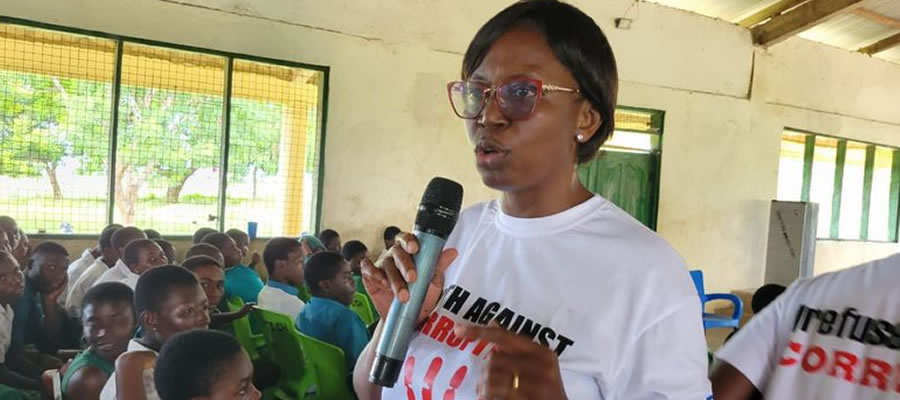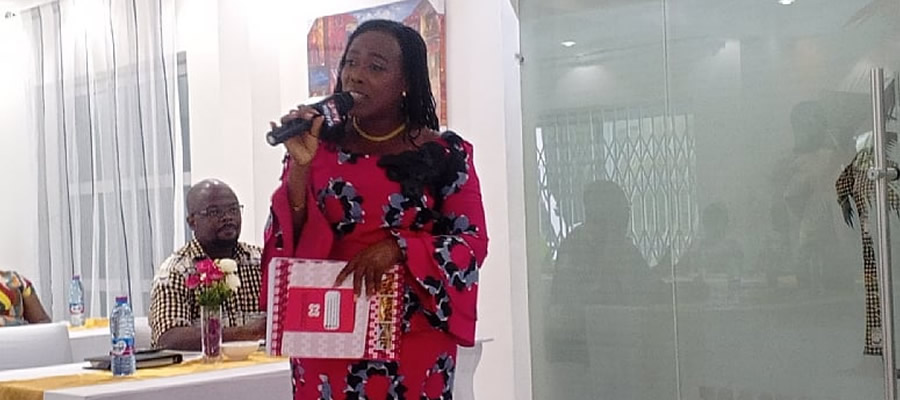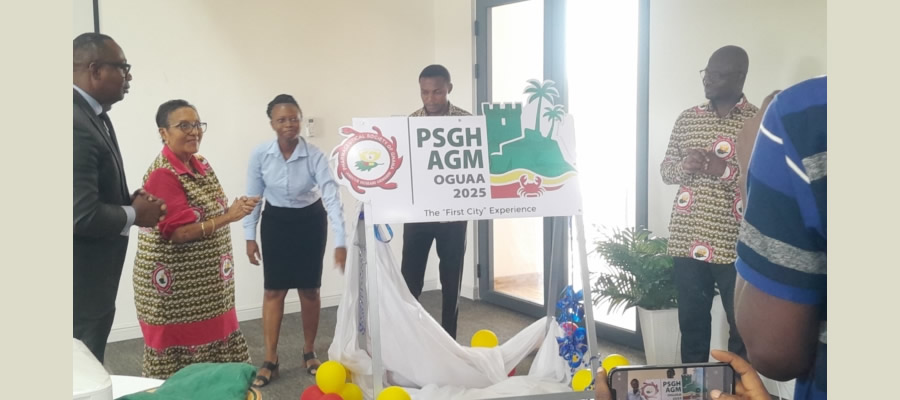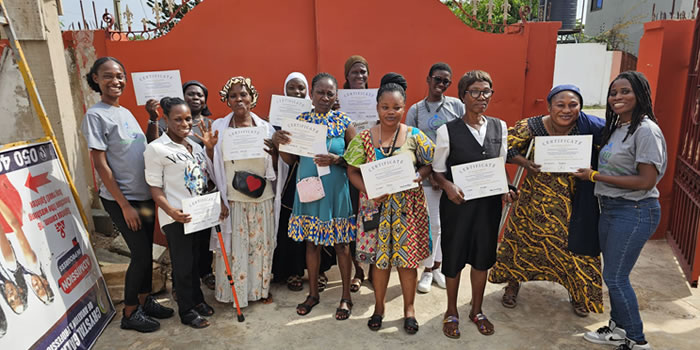

Development Goals and Objectives
A statement on a clear Goal consistent with the Goal of the Growth and Poverty Reduction Strategy (GPRS II)
The goals of the Medium-Term Development Plan are set within the framework of the Growth and Poverty Reduction Strategy (GPRS II). Given the constraints outlined above and the opportunities available, the District Medium – Term Plan will aim at:
Increasing access to quality education
Increasing access to quality health care
Providing basic socio-economic infrastructure
Ensuring efficient and effective revenue mobilization and management
Ensuring clean, safe and healthy environment
Promoting economic activities in the Municipality especially for the vulnerable and excluded
Improving upon the logistic and human resource
Enhancing good governance by strengthening the administrative set-up of the Assembly
Promoting effective private sector participation in the development
Facilitating the development of the information, communication and technological base
Development Projections for 2006 – 2009
Specific, Measurable, Achievable and Time-bound (SMART) Objectives in relation to the Pillars of the GPRS II
Good Governance and Civic Responsibility
To create public awareness on the need for the citizenly to participate in local governance
To ensure the maintenance of public facilities by individuals
To improve upon the database of the district for effective planning and development
Private Sector Competitiveness
To promote private sector development
To ensure the development of public and private institutional capacities
To promote local savings and investment
To facilitate access to credit facilities
To facilitate the provision of farming and fishing inputs and ensure their affordability
To increase access to land by creating land banks and facilitating negotiations between land owners and prospective investors
Human Resource Development and Basic Services
Micro Economy
To increase internally generated revenue (IGF) of the Cape Coast Metropolitan Assembly
To improve on income levels of people in the Metropolis , especially the rural and urban poor by promoting small scale agro-processing industries
To Increase opportunities of people to get employment by providing the youth with technical and vocational skills
Production and Gainful Employment
To provide marketing facilities and services in the Metropolis
To promote the use of modernized and appropriate fishing and farming implements and practices to boost agricultural production and productivity.
To improve shelf life of agricultural produce by facilitating the provision of storage facilities
To facilitate the provision, and improvement of Information, Communication and Technological (ICT) facilities, including roads, telephones and internet connectivity.
Human Resource Development
To ensure the delivery of quality and adequate school infrastructure and furniture
To provide incentives to attract and maintain quality teachers
To intensify public awareness on the need to keep good environmental and personnel hygiene conditions at all times
To ensure the delivery of quality health care by providing adequate health facilities, and recruit and maintain quality personnel
To ensure effective management of waste and the provision of good drainage system
To improve on the quality of urban and feeder road network
To minimize the spread of HIV/AIDS through intensive awareness creation
To promote gender equity in the provision of goods and services
Vulnerable and Excluded
To increase the capacity of women by providing them with vocational skills
To facilitate the provision of credit facilities to the women as well as the physically/mentally challenged
To provide opportunities for the physically/mentally challenged to engage in productive ventures
To promote community based rehabilitation and education of the physically/mentally challenged
To identify children in Worst Forms of Child Labour (WFCL), rehabilitate and ensure their return to school, and, or provide them with employable skills.
Strategies / Activities to achieve the Objectives
• Increasing access to quality education
• Increasing access to quality health care
• Providing basic socio-economic infrastructure in the Municipality
• Promoting economic activities in the Municipality especially for the vulnerable and excluded
` Development Priorities
A statement on clear Municipal Development Priorities linked to the Pillars of GPRS II
The development priorities of the Medium-Term Development Plan are set within the framework of the Growth and Poverty Reduction Strategy (GPRS II). Given the problems outlined above the District Medium – Term Plan will aim at:
Priorities for Good Governance and Civic Responsibilities
Enhancing good governance by strengthening the administrative set-up of the Assembly
Improving upon the logistic and human resource
Ensuring efficient and effective revenue mobilization and management
Promoting effective private sector participation in the development
Priorities for Private Sector Competitiveness
Promoting economic activities in the Municipality especially for the vulnerable and excluded
Facilitating the development of the information, communication and technological base
Priorities for Human Resource Development
Increasing access to quality education
Increasing access to quality health care
Providing basic socio-economic infrastructure
Ensuring clean, safe and healthy environment i
Monitoring and Evaluation
Introduction
Monitoring helps us to know whether or not the on-going activities are in line with the planned activities and therefore the progress of work. It enables one to identify the problems involved in the implementation of the plan so that possible solutions could be found. It therefore avoids unnecessary expenses or expenditure. Evaluation deals with the periodic assessment and review of the extent to which the goals and objectives of the activities have been achieved. It could be carried out quarterly, annually or at the end of the five-year period.
Participatory process which will involve all the stakeholders, (CCMA Staff, Zonal Council and Unit Committee Members, Community Members and Opinion Leaders as well as NGOs and CBOs, among others), would be adopted in the monitoring and evaluation of activities concerning the plan. The various Zonal Councils have high class of personnel (citizenry) who can be involved in monitoring and evaluation of activities, and would be involved in all the processes as was done in the formulation of the plan.
Monitoring
Monitoring is designed to appraise operations in order to determine compliance with management controls and regulations. Monitoring is done on a more frequent and regular basis than evaluation. Monitoring is synonymous with regular auditing and inspections except that monitoring involves not only the financial outlays of the project but its physical development to achieve project target(s). Monitoring does not challenge the choice of target but assures that progress is on schedule.
The Cape Coast Assembly, through the Municipal Planning Coordinating Unit (MPCU) would exercise an overall responsibility over all monitoring and evaluation of the projects and is enjoined to prepare Monitoring and Evaluation procedures and is also responsible for outputs. Monitoring would be done on regular basis, at least monthly and progress of projects submitted to the General Assembly, CBRDP and related agencies for their consumption.
At the community level, all stakeholders, especially the beneficiaries (community members) led by Unit Committees, Assembly Members and Opinion Leaders as well as Civil Society and Local Experts would be very much involved or relied on in monitoring of projects and programmes. These groups or individuals could be drafted to form monitoring teams. This would exhibit transparency in project execution and infuse in them sense of ownership.
Monitoring Reports
Project monitoring measures and records progress of implementation. It focuses on the compliance with the plan and therefore occurs throughout the whole life cycle of the policy and programme. It formally starts when the actual implementation of a project begins and is directed at ensuring that the progress of the work is up to standard, and that all inputs (including labour) are on site at the appropriate time, in the right quantities and of the right quality.
Activities to Monitor
Input Delivery i.e., Resources to achieve the objectives and strategies in GPRS
Output – provision of goods and services produced by the inputs eg schools, etc.
Quality – both input and output
Programme/project coverage (extent)
Target groups - who are the beneficiaries and are they benefiting from the projects/programmes.
Effectiveness - to what extent is the project achieving results.
Thus, this compares inputs and output or objective and results. This is expressed in the form of percentages, i.e., expected results and actual results.
Stakeholders to be involved in Monitoring
The following stakeholders would be involved in the monitoring of projects/programmes .
MPCU
Assembly members
Regional Coordinating Council (RCC)
DCE, DCD
Beneficiaries
Civil society, NGOs, etc.
Evaluation
Evaluation of the respective projects, like the monitoring, would be done with the involvement of all the stakeholders. Evaluation is a process that questions the relevance of the project or plan, challenges all aspects of the design of the plan and examines performances of inputs and implementing agent. It is also measuring device for progress towards targets.
In short, it is a review of project, programme or policy in progress or completed and of its design and results. It is done to determine the relevance and attainment of objectives, efficiency, effectiveness, impact and sustainability of development; make choices; improve performance; learn lessons; and increase accountability; among others.
Development Problems
Summary of Key Developmental Problems/Gaps Identified from the Situation Analysis
The key developmental problems facing the Municipality, relates to the low-income levels of majority of the population. This low-income situation results from the lack of diversified employment opportunities forcing many people into informal sector activities such as petty trading, small-scale manufacturing, fishing and agriculture. The general environmental degradation arising from small-scale agriculture in the rural areas results from the lack of adequate financial resources to engage in sustainable agriculture. In many areas, especially in the coastal zone, the vegetation has been greatly degraded. It is recognized that afforestation programmes have been undertaken by some individuals is in the communities, but these are not widespread.
The low incomes in the Municipality may then be attributable to low returns from agriculture, poor status of socio-economic infrastructure, and particularly agricultural support services such as credit facilities and extension services to support the farmers and fishermen.
Key Developmental Problems
The major developmental problems are summarised as follows;
Good Governance and Civic Responsibility
Inadequate participation in Governance on the part of the citizenry
Unwillingness on the part of majority of the citizenry to participate in the provision and maintenance of public facilities
Inadequate involvement of the people in planning and implementation of projects and programmes
Uncoordinated policies, project planning and implementation / Poor co-ordination and collaboration among the various actors and activities.
Low communal spirit and apathy, and civic inertia
Inadequate security (e.g., limited police patrols, inadequate street lighting, etc)
Complete disregard for law and order (Non adherence to rules and regulations as well as bye-laws / Non-enforcement of rules and regulations as well as bye-laws)
Poor/Scanty and unreliable database
High Rate Illiteracy and Ignorance (Lack of Awareness)
Chieftaincy/ Family disputes
Non functioning of lower levels of the Assembly
Inadequate Funds for the Assembly to implement projects and programmes
Low Internally Generated Revenue (IGF)
Inability of the Assembly to provide the needed infrastructure and render the services as required due to limited resources
Private Sector Competitiveness
Lack of credit facilities
Lack of entrepreneurial skills / personnel
Inadequate / Poor Communication facilities (e.g. telephone facilities)
Low recovery rate of credit facilities granted
Lack of storage facilities
Low prices of agricultural produce
Inappropriate land tenure system / land disputes
Lack of modern and appropriate technology base for production
Poor service delivery (e.g. electricity, water, etc)
Human Resource Development And Basic Services
Micro District Economy
Low Income levels, especially in rural areas
Inadequate Employment Opportunities
Inadequate Employable skills
Inadequate Credit Facilities
Production and Gainful Employment
• Inadequate market infrastructures
• High cost of farming and fishing inputs
• Land Litigation
• Unscientific Farming and Fishing Practices
• Lack of Storage Facilities
Human Resource Development
Inadequate school infrastructure / furniture / personnel
Inadequate health facilities and personnel
Poor attitude to work (clients), especially by public Officers
Inadequate residential accommodation / housing and slum development
Poor environmental and personal hygiene
Poor drainage and waste management
Teenage pregnancy and child delinquency
High incidence of preventable diseases (e.g. Malaria, etc)
Drug abuse
Irresponsible parentage and Child abuse
Congested / unattractive streets and traffic jams.
Environmental pollution
Indiscriminate disposal of liquid and solid waste
Massive (youth) unemployment
Vulnerable and Excluded
High rate of poverty among rural women
Lack of job openings for the physically and mentally challenged
Low involvement of women in decision – making
Child labour and child prostitution
Date Created : 11/16/2017 4:40:14 AM













 facebook
facebook
 twitter
twitter
 Youtube
Youtube
 +233 593 831 280
+233 593 831 280 0800 430 430
0800 430 430 GPS: GE-231-4383
GPS: GE-231-4383 info@ghanadistricts.com
info@ghanadistricts.com Box GP1044, Accra, Ghana
Box GP1044, Accra, Ghana